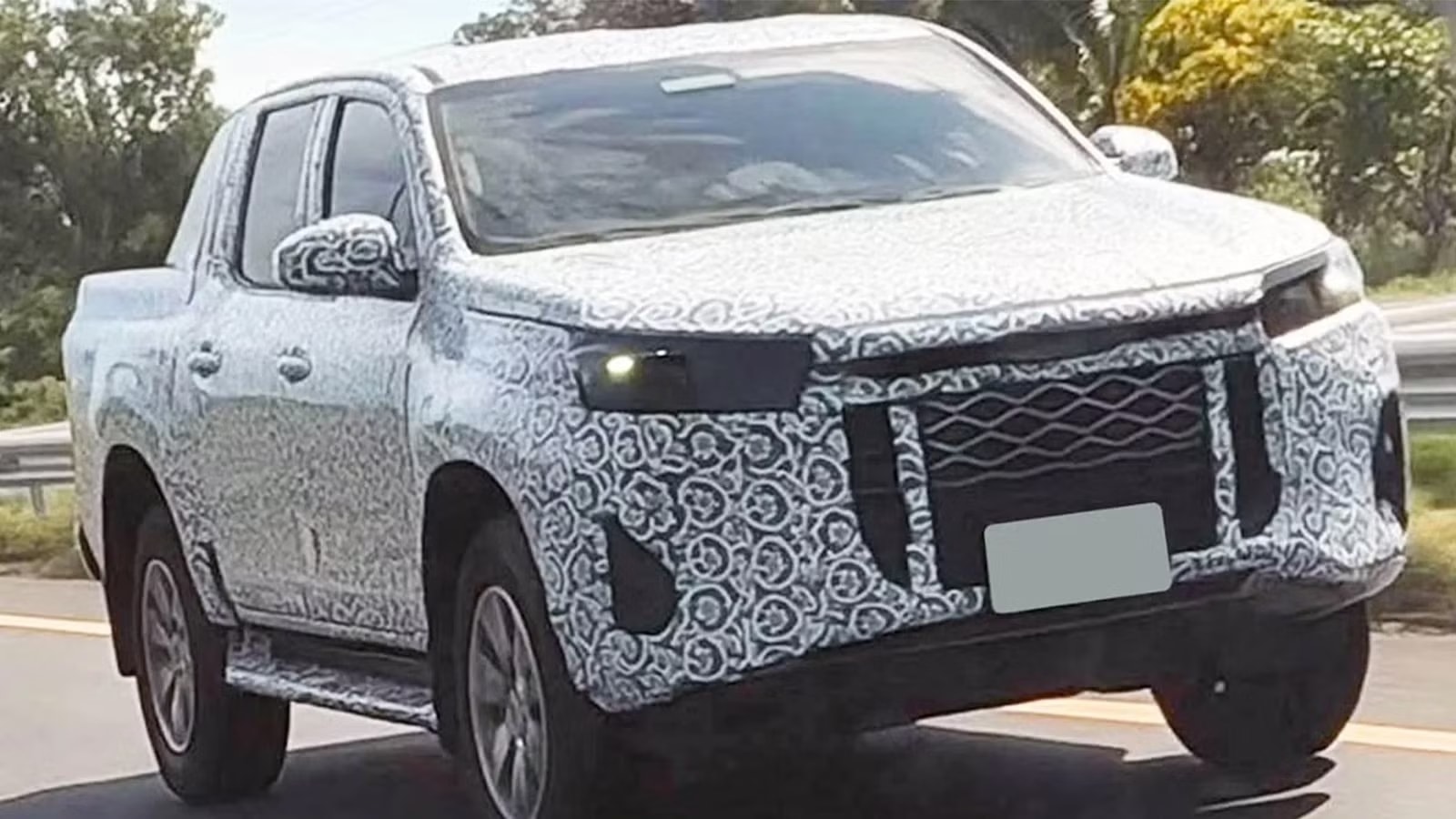Toyota Hilux 2026 prototype: Interior redesign
Leaked images and patents show the 2026 Toyota Hilux shifting to a modern, SUV-like interior like the RAV4, instead of the traditional muscular lines. The model is expected to launch at the end of November 2025 at the Thailand International Motor Expo.
The next-generation Toyota Hilux 2026 is expected to debut at the Thailand International Motor Expo in late November 2025. As the announcement date approaches, a series of interior images believed to be of the prototype version have appeared, showing a design direction that is clearly different from the current generation. Although not yet verified by Toyota, the leaked details match previous patent registrations, increasing the credibility of the source.
Biggest highlight: Hilux “SUVizes” the cockpit, softening the traditional square blocks to prioritize a modern feel and comfort – a move reminiscent of what Toyota did with the new Camry, focusing on deep redesign instead of radically changing the platform.
SUV-oriented design language, different from traditional pickup trucks
According to images shared by the account @cars_secrets and patent documents, the 2026 Hilux dashboard appears to have many smooth flat surfaces, horizontal decorative strips, and streamlined air-conditioning vents. The organization of blocks and details makes the cockpit more reminiscent of the 2026 Toyota RAV4 than a familiar rugged pickup truck.
Compared to the Toyota Tacoma currently sold in the US – which emphasizes square surfaces and upright modules – the new Hilux seems to be less muscular in exchange for a more friendly, less industrial feel. Even when placed next to the Land Cruiser Prado, which is loyal to classic looks such as round air vents and upright dashboard, the 2026 Hilux seems to find its own way to balance pickup practicality with SUV-like comfort.

SUV-oriented cabin: retro color scheme, adequate screen
The center of the dashboard is a floating entertainment screen, estimated to be about 10 inches in size, with thick black borders. Most likely, the standard versions will still keep the 8-9 inch screen, while the high-end versions can choose a larger size. Not following the trend of "giant screens" helps the overall space to be clean, limiting the impact on visibility and operations when off-road.
The combination of reddish brown tones and black leather creates a strong contrast, bringing a nostalgic nuance but expressed in a simple, neat surface. The long horizontal lines help the dashboard feel wider, while clearly separating the driver and passenger areas. The air-conditioning vent system is reduced, placed neatly along the decorative strip - a detail reminiscent of the 2026 RAV4.
Some elements are still missing from the leaked images, such as the instrument cluster behind the steering wheel and many finishing details. Earlier sketches suggested a domed instrument cluster and an angular center console. However, these are likely just internal or supplier prototypes, and could change when commercialized.

User experience: logical layout, prioritize ergonomics
The high horizontal center screen promises to be easy to see, while the physical control cluster is likely to be present for quick operation. The balance between touch and mechanical keys – if maintained in the commercial version – will be a plus in real-world usage conditions, especially when wearing gloves or moving on bad roads.
The use of large flat surfaces and a reduction in the number of complex cuts can help limit the phenomenon of reflective glare and easy cleaning, suitable for the durability needs of pickup users. At the same time, contrasting tones and horizontal decorative strips contribute to a more premium feel than the previous purely practical.
Chassis remains the same, strategy to optimize development costs
According to many sources, the 2026 Hilux is expected to still use the chassis and cabin size of the current generation, while the exterior, interior and technology will change significantly. This approach is consistent with the strategy of optimizing product development costs, which Toyota has applied on the new Camry and may repeat with the next generation Corolla.
From a technical perspective, keeping the platform familiar can help Toyota control risks, ensure durability and load-carrying capacity – core attributes of the Hilux line – while also promoting the upgrade of the user experience in the cabin, which is an important criterion as pickup truck customers shift to everyday multi-purpose needs.
Safety and technology: information will be clear when launched
There are no details about driver assistance systems or safety ratings yet. Details such as the instrument cluster configuration, the number of ports, or smart connectivity features have not been confirmed. Based on the leaked photos, it can be seen that Toyota is not following the trend of oversized screens; the rest will have to wait for the official announcement at the launch event.
Positioning and competitors: different from Ford Ranger and KIA Tasman
The 2026 Hilux is expected to continue to be at the heart of Toyota’s pickup lineup, competing with the Ford Ranger and KIA Tasman. Unlike some rivals that pursue large dashboards and dense modular styling, the new Hilux appears to be taking an “SUV-ized” approach to improve the quality feel and everyday friendliness, while still maintaining its proven platform structure.

Conclusion: a notable move, awaiting commercial release
The 2026 Hilux – as seen in leaked images and patent documents – shows a strategic shift from a purely rugged, tool-like SUV to a modern, streamlined, everyday-oriented SUV. The strengths lie in the bright dashboard layout, the unique color scheme, and the decision not to exaggerate the screen size. On the other hand, many key details such as the instrument cluster, the list of safety and connectivity features, and the equipment configuration remain unknown until the launch date.
Pros: fresh, clean cabin design language; improved quality feel; platform inheritance promises durability. Cons: no official confirmation on specifications and equipment; some details may change when commercialized; users who prefer a muscular style may need time to get used to it.
